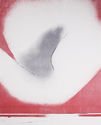
19th, 20th & 21st Century Fine Prints
707-546-7352 · fax 707-546-7924 · web: www.annexgalleries.com · email: artannex@aol.com
Esteban Vicente Biography
Esteban Vicente
American
1904–2001
Biography
Esteban Vicente, painter and printmaker, was born Esteban Vicente Pérez in Turégano, Spain on January 20, 1903. His mother, Sofia Pérez y Álvarez, came from an Asturian family, and his father, Toribio Vicente Ruiz, came from a military family and served in the Civil Guard, a police force, in the Castile region. His father resigned his commission and moved the family to the capital, Madrid.
Vicente's father, an art enthusiast and amateur painter, took him to the Museo del Prado nearly every Sunday from the time he was four years old. He began drawing at sixteen but was expected to continue the family military tradition. He was enrolled in military school in 1918 for three months before he decided to become an artist. In 1921, Vicente enrolled at the Real Academia de Bellas Artes in Madrid with the intention of studying sculpture. He completed his training in 1924.
Vicente's first one-man exhibition was in 1928 with Juan Bonafé at the Ateneo de Madrid. Afterward, he left for Paris and did not return to Spain until 1930. In 1935 he married Estelle Charney, an American whom he had met while in Paris. Vicente supported the Loyalist forces after the outbreak of the Spanish Civil war by painting camouflage in the mountains outside Madrid for a few months. He and his wife moved to New York later that year. The Spanish Ambassador to the U.S. positioned Vicente as Vice Consul in Philadelphia, which supported his family for three years. During this time he was able to continue his art and in 1937 he had his first one-man show in New York at the Kleeman Gallery.
In 1939, the Spanish Republic fell and Vicente returned to New York City. During World War II, he supported himself with commissions for portraits and by teaching Spanish. An exhibition in Puerto Rico in 1945 led to a position at the University of Puerto Rico in 1946. He taught painting there until he returned to New York in 1947. He was among the faculty at Black Mountain College, Black Mountain, NC; the New York Studio School of Drawing, Painting and Sculpture, New York, NY; and the University of California, Berkeley, CA, among other institutions. He also worked with Stanley William Hayter and others at Atelier 17 in New York, expanding his efforts to printmaking.
The New York School was coming into being at the time, and Vicente established relationships with most of its members. He participated in their seminal exhibitions at the Kootz Gallery in 1950, the 9th Street Art Exhibition in 1951, and in exhibitions at the Sidney Janis Gallery and Charles Egan Gallery. This led to his representation by the Leo Castelli, André Emmerich and Berry-Hill Galleries in New York City. Vicente was a founding member of the New York Studio School, where he taught for thirty-six years.
A New York City Bronx school, Public School 170 (PS 170) and a Kindergarten to Second Grade school, named the Esteban Vicente School, honor him as a renowned artist and child advocate. Art programs were incorporated into the schools by a family member, and at PS 170, students learn about Vicente and his style, color and design. There are examples of his work adorning the walls. In 1998, despite never exhibiting his work in Spain, the Spanish government opened the Museo de Arte Contemporáneo Esteban Vicente in his honor. Vicente's works are also represented in the Metropolitan Museum of Art, the Museum of Modern Art, the Whitney Museum of American Art, and the Solomon R. Guggenheim Museum in New York.
Esteban Vicente died in Bridgehampton, New York on January 10, 2001.

